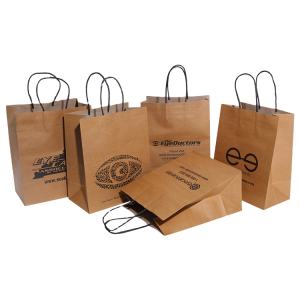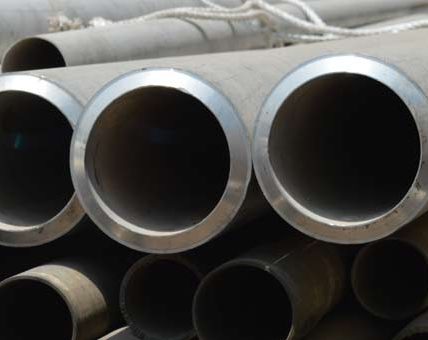The shift from plastic to paper bags has been a significant development in the global effort to reduce environmental pollution and promote sustainability. Paper bags, once considered an archaic and inefficient packaging solution, have made a remarkable comeback. This resurgence is driven by increasing environmental awareness, legislative changes, and advancements in paper manufacturing technologies. As consumers and businesses strive to adopt eco-friendly practices, paper bags have become a symbol of sustainable living and responsible consumption. This article explores the evolution, advantages, challenges, and future prospects of paper bags in a comprehensive manner.
Historical Background: From Early Usage to Decline
The history of paper bags dates back to the mid-19th century when they were first introduced as a convenient means of carrying goods. In 1852, Francis Wolle, a schoolteacher in Pennsylvania, invented the first paper bag machine, revolutionizing the packaging industry. By the late 19th and early 20th centuries, paper bags had become ubiquitous, particularly in the retail and grocery sectors. However, the rise of plastic bags in the 1970s marked a significant decline in the use of paper bags. Plastic bags, being cheaper, more durable, and water-resistant, quickly gained popularity and became the preferred choice for packaging and carrying goods.
The environmental repercussions of plastic bags, however, soon became apparent. The non-biodegradable nature of plastic led to severe pollution, littering landscapes and oceans, and posing a threat to wildlife. By the late 20th century, environmentalists and scientists began raising alarms about the ecological damage caused by plastic bags. This prompted a reevaluation of packaging materials, leading to the resurgence of paper bags as a more sustainable alternative.
Environmental Benefits: A Sustainable Choice
One of the primary advantages of paper bags is their environmental friendliness. Unlike plastic bags, paper bags are biodegradable and compostable, breaking down naturally without leaving harmful residues. This significantly reduces the impact on landfills and marine ecosystems. Paper bags are also made from renewable resources, primarily wood pulp from sustainably managed forests. This contrasts with plastic bags, which are derived from non-renewable petroleum-based sources.
Moreover, paper bags contribute to a circular economy. Used paper bags can be recycled and converted into new paper products, reducing the need for virgin materials and minimizing waste. The recycling process for paper is also less energy-intensive compared to the production of plastic bags. As a result, paper bags have a lower carbon footprint, making them a preferred choice for environmentally conscious consumers and businesses.
Technological Advancements: Improving Durability and Functionality
In the past, one of the major criticisms of paper bags was their lack of durability and resistance to moisture. However, advancements in paper manufacturing technology have addressed these issues. Modern paper bags are designed to be stronger and more durable, capable of carrying heavier loads without tearing. Special coatings and treatments have also made paper bags more resistant to moisture, expanding their usability in various conditions.
Innovations such as the introduction of reinforced handles and the use of high-quality kraft paper have further enhanced the functionality of paper bags. Kraft paper, known for its strength and durability, is commonly used in the production of paper bags. This type of paper is made from the chemical pulp produced in the kraft process, which involves the treatment of wood chips with a mixture of water, sodium hydroxide, and sodium sulfide. The resulting kraft paper is not only strong but also retains its durability even when wet, making it an ideal material for paper bags.
Economic Impact: A Boon for the Paper Industry
The resurgence of paper bags has had a positive economic impact, particularly for the paper and forestry industries. The increased demand for paper bags has led to a boost in production, creating jobs and stimulating economic growth. Paper bag manufacturing involves a series of processes including pulping, papermaking, and bag production, each of which provides employment opportunities at different stages of the supply chain.
Additionally, the paper industry has seen investments in new technologies and facilities to meet the growing demand for sustainable packaging solutions. This includes the development of more efficient recycling processes and the use of alternative fibers such as agricultural residues and recycled paper. The economic benefits extend beyond the paper industry, influencing related sectors such as retail, where businesses have had to adapt to new packaging regulations and consumer preferences.
Legislative Influence: Policies Driving Change
Government regulations and policies have played a crucial role in promoting the use of paper bags over plastic bags. Many countries and cities around the world have implemented bans or restrictions on single-use plastic bags, incentivizing the adoption of paper bags. For example, in 2019, the European Union adopted a directive to ban certain single-use plastic products, including plastic bags, by 2021. Similar measures have been taken in countries like India, Kenya, and Australia.
These legislative actions are often accompanied by public awareness campaigns aimed at educating consumers about the environmental benefits of paper bags. Subsidies and tax incentives for businesses that adopt sustainable packaging practices have also been introduced in some regions. Such policies not only encourage the use of paper bags but also promote broader environmental sustainability initiatives.
Challenges and Criticisms: Addressing the Downsides
Despite their many benefits, paper bags are not without challenges and criticisms. One of the primary concerns is the environmental impact of paper production itself. The process of making paper involves significant water and energy consumption, as well as the use of chemicals that can contribute to pollution. Deforestation is another critical issue, as the demand for wood pulp can lead to the depletion of forests if not managed sustainably.
Recycling paper bags also presents challenges. While paper is recyclable, the recycling process can be complicated by the presence of inks, coatings, and adhesives used in bag production. Contaminated or heavily soiled paper bags are often not recyclable, ending up in landfills. Moreover, the transportation and logistics involved in the distribution of paper bags can add to their carbon footprint. If you want to know more information about pre roll packaging visit TopUSAPackaging.
Addressing these challenges requires a multifaceted approach. Sustainable forestry practices, including the use of certified wood sources and reforestation efforts, are essential to mitigate the impact of deforestation. Innovations in paper recycling technology can improve the efficiency and effectiveness of the recycling process. Additionally, consumer education on proper disposal and recycling of paper bags is crucial to maximizing their environmental benefits.
Consumer Behavior: Shifts in Perception and Usage
Consumer behavior plays a pivotal role in the adoption and success of paper bags. Over the past decade, there has been a noticeable shift in consumer perception towards more sustainable and eco-friendly products. This shift is driven by increased awareness of environmental issues, media coverage of plastic pollution, and a growing preference for brands that demonstrate social and environmental responsibility.
Surveys and studies have shown that a significant portion of consumers are willing to pay a premium for products that are environmentally friendly. This trend has encouraged retailers and businesses to adopt paper bags as part of their sustainability initiatives. Marketing strategies that highlight the eco-friendly attributes of paper bags and their role in reducing plastic pollution have also been effective in influencing consumer behavior.
However, challenges remain in changing long-established habits. The convenience and familiarity of plastic bags can make it difficult for some consumers to switch to paper bags. Overcoming this requires consistent efforts in education, incentives, and making paper bags as accessible and convenient as their plastic counterparts.
Future Prospects: Innovations and Sustainability
The future of paper bags looks promising, with ongoing innovations and a strong emphasis on sustainability. Researchers and manufacturers are exploring new materials and processes to enhance the properties of paper bags. For instance, the use of nanotechnology and bio-based coatings can improve the strength and water resistance of paper bags without compromising their recyclability.
There is also a growing interest in developing paper bags from alternative fibers such as hemp, bamboo, and agricultural residues. These materials offer the advantage of being renewable and having a lower environmental impact compared to traditional wood pulp. Advances in digital printing technology are enabling more efficient and eco-friendly printing methods, reducing the environmental footprint of paper bag production.
Moreover, the integration of smart technologies into paper bags is an emerging trend. Features such as QR codes and RFID tags can enhance the functionality of paper bags, providing consumers with information about the product, its origin, and recycling instructions. This not only adds value to the consumer experience but also supports traceability and transparency in the supply chain.
Conclusion: Embracing a Sustainable Future
Paper bags have come a long way from their early days as a simple packaging solution. Their resurgence in recent years underscores a broader movement towards sustainability and environmental responsibility. While challenges remain, the benefits of paper bags in reducing plastic pollution, supporting renewable resources, and promoting recycling are undeniable.
The combined efforts of consumers, businesses, and policymakers are crucial in driving the continued adoption and improvement of paper bags. By embracing innovative technologies, sustainable practices, and a commitment to environmental stewardship, we can ensure that paper bags play a vital role in a more sustainable future. As we move forward, the humble paper bag will continue to symbolize our collective efforts to create a cleaner, greener, and more sustainable world.





